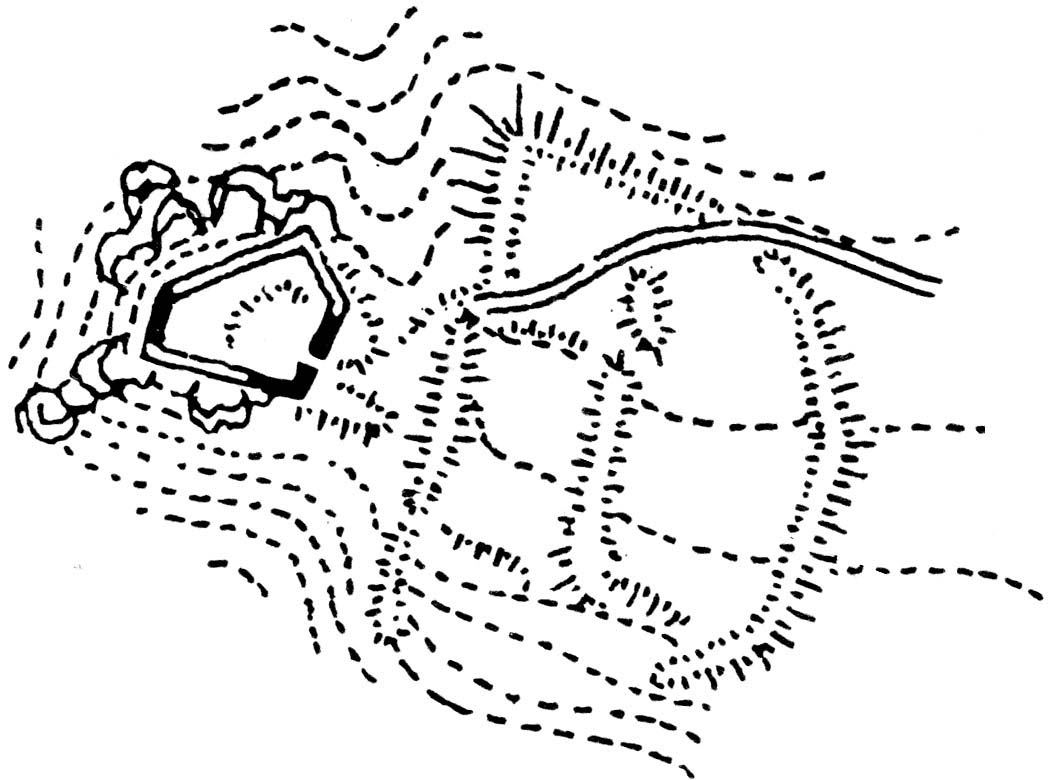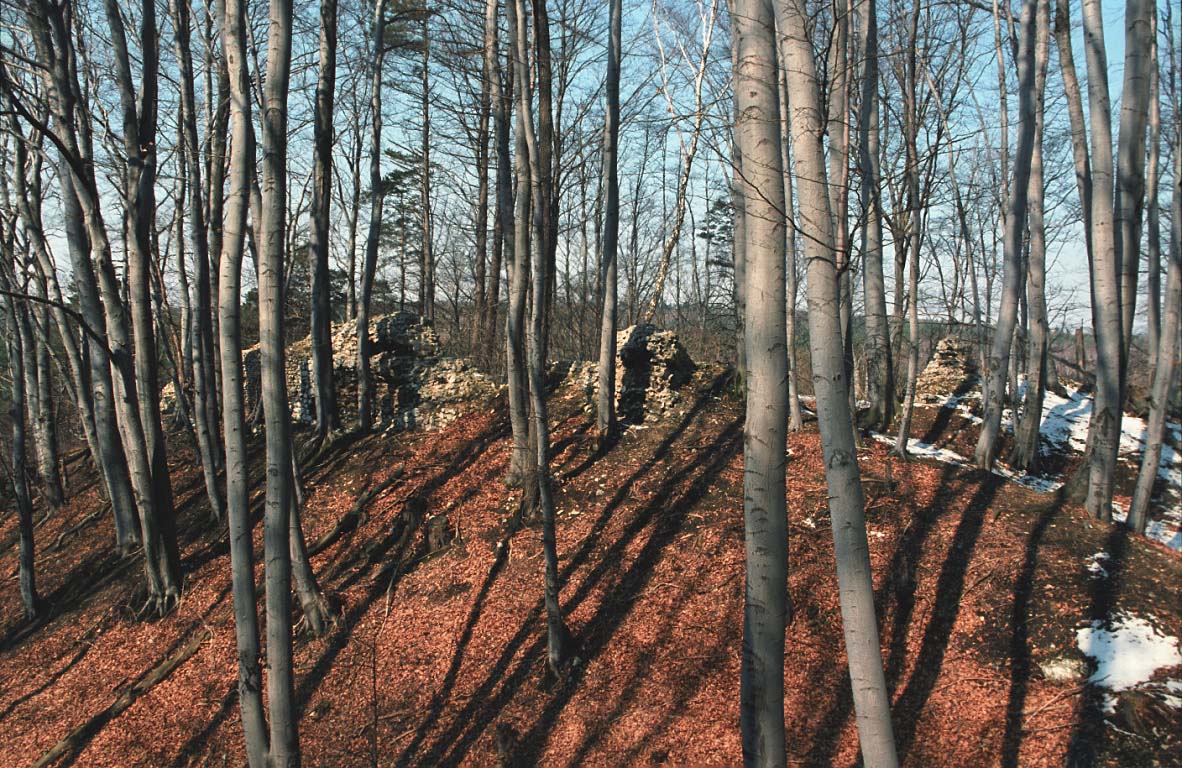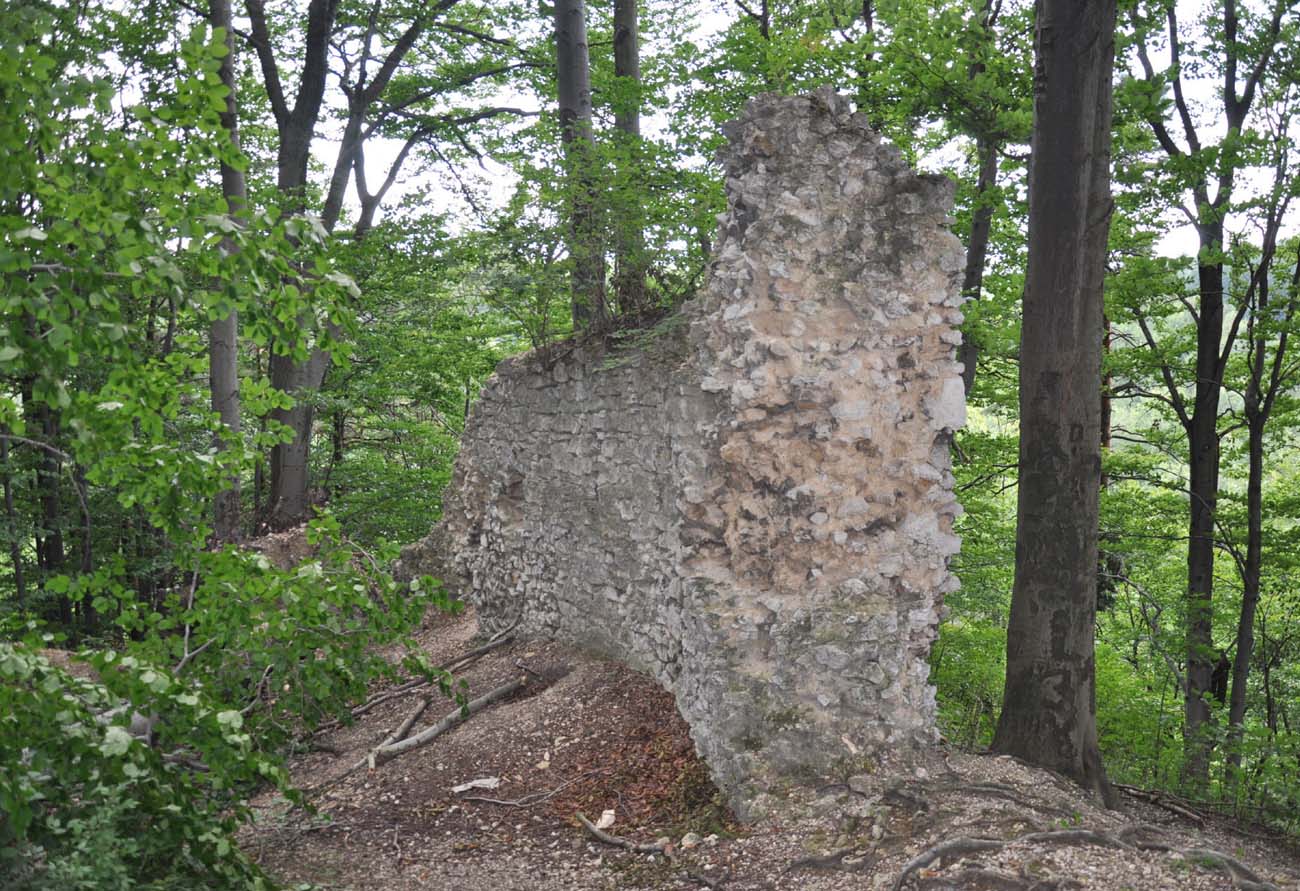History
The first information in documents about the settlement of Udórz was recorded in 1257 and 1262, when it belonged to the endowment of the Poor Clares nunnery in Zawichost, later in Skała, and from 1354 to the monastery in Miechów. In 1365, the latter handed over Udórz to the Długosz family of the Wieniawa coat of arms. The castle began to be erected at the turn of the 14th and 15th centuries with the use of the older ramparts of the hillfort of the Lusatian culture, but the investment was probably never completed. Its founder was probably the then heir of Udórz, Iwo from Obiechów, holding the office of the magnus procurator of Kraków at that time. The reasons for interrupting the work have not been explained, and the castle was not recorded in documents in the Middle Ages. It was not until 1581 that it passed from the hands of Mikołaj Długosz to Andrzej Koryciński.
Architecture
The castle was erected on the top of a lofty mountain, over a small Udorka River and the Pilica River flowing a little further to the east and south-east. Steep, rocky slopes provided protection on three sides, only from the east a gentler approach provided an access road to the promontory. The castle consisted of an irregular pentagon of walls with wall lengths of 30, 11, 31, 19 and 20 meters, without traces of brick buildings inside the perimeter of the walls. From the east, a system of earth ramparts protecting the outer bailey adjoined it. There was a lime kiln in it.
Current state
To this day, fragments of two masonry walls on the hill and many older earth ramparts, overgrown with beech forest, have survived. The short western curtain and two sections of the walls on the eastern side, in the place of the supposed entrance gate, have survived in the best condition. Admission to the ruin is free.
bibliography:
Architektura gotycka w Polsce, red. M.Arszyński, T.Mroczko, Warszawa 1995.
Kołodziejski S., Średniowieczne rezydencje obronne możnowładztwa na terenie województwa krakowskiego, Warszawa 1994.
Leksykon zamków w Polsce, red. L.Kajzer, Warszawa 2003.




